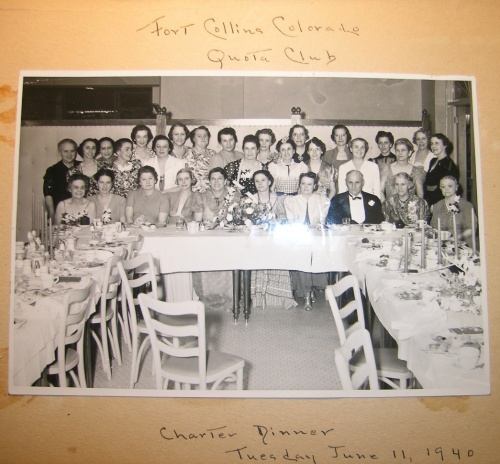by Toby J. Swaford, K-12 Education Coordinator
(Ed. note: it’s been raining constantly in Fort Collins this summer, and the resulting boom in the mosquito population has driven us to a certain degree of obsession with the topic. But it’s been very educational!)
Summertime brings many pleasures and a few irritants, including the buzzing of insects. While some may find the lower register drone of a bee quite relaxing, the higher pitched mosquito is nothing if not annoying.
According to one West African tale, Mosquito was known for saying foolish things. Mosquito’s constant silliness drove Iguana to distraction; so much so, that Iguana placed sticks in his ears to drown out Mosquito’s constant prattle. Unfortunately, the sticks made it impossible for Iguana to communicate with any of the other animals, which leads to a series of misunderstandings and tragedies.
The end result is that Owl neglects her duty of waking up the sun and the world is plunged into darkness until the other animals unravel the series of events that have lead up to their dilemma. From this point on, the animals refuse to speak with Mosquito; who, in his loneliness, persistently buzzes in the ear of Man asking if the rest of the animals are still mad at him.
Apparently, they are.
Actually, mosquitoes and many other insects produce the buzzing noise as a function of flight. Some insects flap their wings slowly, like the butterfly (8 to 12 beats per second), and make no perceptible sound. The mosquito, on the other hand, beats its wings very fast – averaging 450 to 600 beats per second creating the distinctive, high-pitched whine.
Of course when it comes to mosquitoes, if the buzz is bothersome, the bite is beastly — but why? For starters, only female mosquitoes bite; the males lack the proboscis, the long, thin, needle-like mouth part required to penetrate an animal’s skin and ingest blood. As this occurs, a small amount of mosquito saliva is injected into the bite. The saliva contains an anti-coagulant, to keep the blood flowing through the proboscis as the female feeds. Afterwards, the body’s immune system responds to the residual saliva by forming a welt, or wheal, while the itching sensation is caused by the break down of the proteins contained in the mosquito spit.
Okay, I know what you’re thinking, “If all of this is true,” and I assure you, it is, “then what do male mosquitoes eat?” The answer is simple, the same thing that feeds the females. Yup, all mosquitoes, male and female, survive solely on the sugars found in plant nectar.
So, what’s with the Dracula routine? Two things — first, I say Dracula because when it comes to blood suckers, I’m old school. No self respecting vampire should ever sparkle, under any circumstances — period.
Second, and more pertinent to this discussion, female mosquitoes require the proteins in blood to develop their eggs. A single, blood rich meal can facilitate the production of as many as 250 eggs.
In addition to blood protein, female mosquitoes also require something else to reproduce. (Well, something other than the male, but we’ll get back to him in a moment.) Standing water is a crucial element for the reproductive cycle. Female mosquitoes can lay their fertilized eggs in pretty shallow environments; a half-inch of water is all that is needed. Soon, the eggs hatch into squirming little larva, which go through a series of four molts until they reach the pupa stage. A hard case is formed around the young mosquito, until it emerges as a fully formed adult.
Removing, or treating, standing water is still one of the most effective ways to combat potential mosquito populations, especially in rainy seasons like we’ve experienced in Fort Collins this summer.
Of course, if you think our mosquitoes are bad you should consider the plight of the folks in Karmarno, Manitoba. Not only are they the mosquito capital of Canada, the name Karmarno literally translates to “mosquito” in the Ukrainian language; and in 1984 the town erected the world’s largest mosquito statue, with a wingspan of fifteen feet.

Closer to home, New Jersey is considered “Mosquito Central,” with over 60 species of mosquito found there. It was also along the East Coast that the word “mosquito” was introduced into the English language. Translating as “little fly” in both Spanish and Portuguese, mosquitoes were simply referred to as “gnats” in England before the word made its way back from the colonies.
Getting back to the male, it seems that in addition to the obvious role he plays in fertilizing the eggs, he must first romance the female. Remember that buzzing we discussed earlier? Scientists have recently discovered that it plays an important role in attracting a mate. Males produce a sound within the 600 hertz range, while females come in somewhere around 400 hertz. When mating, the happy couple will harmonize reaching into the range of 1,200 hertz.
This new discovery changes what many scientists once thought about mosquitoes, including that the females had no sense of hearing. It also leads us to believe that before they mate, mosquitoes may spend time whispering sweet nothings into each other’s ears.
Ah, romance.




















You must be logged in to post a comment.